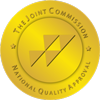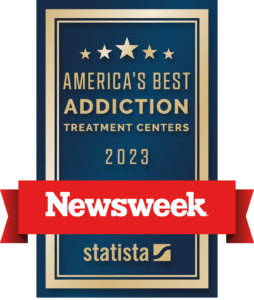Depression Treatment Programs
The State of Mental Health in the United States
As much as we prioritize physical health, mental health is often overlooked in the world. Depression treatment programs can be an irreplaceable lifeline for those in need. 1 in 5 U.S. adults experiences mental illness each year. 1 in 20 U.S. adults experiences serious mental illness each year. 1 in 6 U.S. youth aged 6-17 experience a mental health disorder each year. 50% of all lifetime mental illness begins by age 14, and 75% by age 24.
Suicide is the 2nd leading cause of death among people aged 10-34. 21% of U.S. adults experienced mental illness in 2020 (52.9 million people). 46.2% of U.S. adults with mental illness received treatment in 2020. 64.5% of U.S. adults with serious mental illness received treatment in 2020.
What is a Depression Disorder?
Depression is a common but serious mood disorder, also known as major depressive disorder or clinical depression. This disorder is more than just moments of sadness or the “blues,” and a person dealing with depression can’t just “snap out of it.” Depression causes severe symptoms that affect how you feel, think, and cope with daily life activities; such as eating, sleeping, and working. To be diagnosed with depression, your symptoms must last for a minimum of two weeks. If you or someone you know is battling a mental health disorder like depression, then you may also have a co-occurring disorder like substance abuse.

People with depression have a 40% higher risk of developing cardiovascular and metabolic diseases than the general population. People with serious mental illness are nearly twice as likely to develop these conditions. 32.1% of U.S. adults with mental illness also experienced a substance use disorder in 2020 (17 million individuals)At Sana Lake Recovery Center, our healthcare professionals can treat your depression and substance abuse problems.
There are different forms of depression; some differ slightly or can be brought on by certain circumstances or life events.
- Persistent Depressive Disorder, also known as dysthymia, is when a person is in a depressed mood that lasts for at least two years.
- Postpartum Depression occurs in many women after giving birth. It’s more than just the “baby blues,” which is defined as mild depressive and anxiety symptoms that go away after about two weeks post-delivery. Women with this type of depression experience full-blown major depression during pregnancy or after delivery, affecting their daily care activities for themselves and their babies.
- Psychotic Depression happens when a person experiences severe depression and some form of psychosis. Psychosis is a condition when a person suffers from delusions or hallucinations.
- Seasonal Affective Disorder is thought to be a state of depression that occurs during the winter months and typically goes away during the spring and summer.
- Bipolar Disorder is different from depression. People with this disorder have episodes of extremely low moods, called bipolar depression, that meet the criteria for major depression.
Symptoms of Depression
For some, depression will only occur once in their lifetime, but people typically will experience multiple episodes. Signs, or symptoms, that a person has depression occur most of the day, nearly every day. They can include:
- Feelings of sadness, tearfulness, emptiness, or hopelessness
- Anger (Outbursts), irritability, or frustration over trivial matters
- Loss of interest in normal daily activities
- Disturbances in sleep, including insomnia or oversleeping
- Fatigue, lack of energy
- Reduction in appetite and weight loss or an increase in appetite and weight gain
- Anxiety, Agitation, or restlessness
- Slowed cognitive functions, speech, or body movements
- Feelings of worthlessness or guilt, fixating on past failures or self-blame
- Problems concentrating, thinking, making decisions, or remembering things
- Frequent or reoccurring thoughts of death, suicidal thoughts, suicide attempts, or suicide
- Unexplained physical ailments like back pain or headaches with no explanation
Depression can affect you at any stage in life. Symptoms in children and teens are similar to those in adults but can have some differences. In younger children, they may experience sadness, clinginess, refuse to go to school, or be underweight. Teenagers may show signs of worthlessness, anger, poor performance or attendance in school, and use of recreational drugs or alcohol. In older adults, depression can often go undiagnosed and untreated as they tend not to seek professional help.
Their symptoms can include memory difficulties or personality changes, physical aches and pains, and staying at home instead rather than going out to socialize and do new things. If left untreated, developments such as borderline personality disorder, depressive disorders, and an eating disorder can arise to calm the emotional pain.
What are the Causes of Depression?
Depression does not have a single cause. It can be triggered by a life crisis, physical illness, or something else—but it can also occur spontaneously. Scientists believe several factors can contribute to depression:
- Trauma. When people experience trauma at an early age, it can cause long-term changes in how their brains respond to fear and stress. These changes may lead to depression.
- Genetics. Mood disorders, such as depression, tend to run in families.
- Life circumstances. Marital status, relationship changes, financial standing, and where a person lives influence whether a person develops depression.
- Brain changes. Imaging studies have shown that the frontal lobe of the brain becomes less active when a person is depressed. Depression is also associated with changes in how the pituitary gland and hypothalamus respond to hormone stimulation.
- Other medical conditions. People who have a history of sleep disturbances, medical illness, chronic pain, anxiety, and attention-deficit hyperactivity disorder (ADHD) are more likely to develop depression. Some medical syndromes (like hypothyroidism) can mimic depressive disorder. Some medications can also cause symptoms of depression.
- Drug and alcohol misuse. Adults with a substance use disorder are at significantly higher risk of experiencing a major depressive episode. Co-occurring disorders require coordinated treatment for both conditions, as alcohol can worsen depressive symptoms.
What is the Most Effective Treatment for Depressed Patients?
Generally, a combination of medication and psychotherapy helps to alleviate depression. You may have a psychiatric physician prescribe you medication for your symptoms. However, some people have depression that they can easily treated by a psychiatric specialist. A free online assessment can be used to determine your symptoms. Depression recovery, depending on the severity, is best suited to a treatment program. Contact your local health department to find a treatment center that suits your needs. For example, family sessions could be used to help patients remain connected during their recovery.
What are the Two Most Common Treatments for Major Depression?
It is possible to find therapists of any type. Three commonly applied techniques for depression treatment are psychodynamic therapy, interpersonal therapy, and Cognitive behavior therapy. Sometimes mixed approaches are employed. Therapeutic methods such as talk therapy have been a staple to improve the quality of the patient’s mental health issues. Treatment facilities are consistently monitored; typically primed with cleaning service contracts, medical care, hygiene guidance, prescription medication, and symptom screening protocols.
What are the Most Common Methods to Treat Depression in the United States?
Antidepressants are traditionally used in the treatment of depression. It takes some time on the job—usually 4 or 8 weeks, and symptoms of insomnia, hunger, or concentration usually improve before moods improve. Before taking any medicine, the patient must get screened for its effectiveness.
Although depressive disorder can be a devastating illness, it often responds to treatment. The key is to get a specific evaluation and treatment plan. Safety planning is important for individuals who have suicidal thoughts. After an assessment rule out medical and other possible causes, a patient-centered treatment plan can include any or a combination of the following:
- Psychotherapy includes cognitive behavioral therapy, family-focused therapy, and interpersonal therapy.
- Medications include antidepressants, mood stabilizers, and antipsychotic medications.
- Exercise can help with the prevention and mild-to-moderate symptoms.
- Brain stimulation therapies can be tried if psychotherapy and/or medication are not effective. These include electroconvulsive therapy (ECT) for depressive disorder with psychosis or repetitive transcranial magnetic stimulation (rTMS) for severe depression.
- Light therapy, uses a lightbox to expose a person to full-spectrum light to regulate the hormone melatonin.
- Alternative approaches including acupuncture, meditation, faith, and nutrition can be part of a comprehensive treatment plan.
What is a Depression Treatment Program?
Depression treatment centers are facilities that offer long-term care. People with chronic depression or those with additional mental health needs may need to be continuously evaluated. Research of the depression treatment center is recommended, usually checking for licensed mental health professionals and proper and secure storage of personal items. Outpatient care options are available for depression treatment, usually including group therapy or individual therapy. For those with chronic depression, inpatient treatment for depression can be an invaluable resource — especially if they are experiencing:
- Hallucinations or delusions
- Insomnia
- Exhaustion
- Thoughts of self-harm or harming others
Depression and Substance Abuse
Substance abuse is common among people with a depressive disorder. When in a depressive state, most people look for something to uplift their spirits or to numb the painful thoughts. They often use substances like alcohol or drugs to achieve this desired effect. The problem is that depression and substance abuse feed into each other, resulting in one condition making the other worse.
Often, individuals who suffer from depression turn to alcohol use to cope with the symptoms of their mental health disorder. This can result in the person developing co-occurring disorders: alcohol dependence and depression.
When a person has depression and an addiction, it is called a dual diagnosis. Dual Diagnosis is made up of any combination of a mental disorder, like depression, and addiction. Clinical depression has a high risk of accidental injury, self-harm, and suicide. Depression also has physical effects on the body. It can suppress the immune system which weakens the body, leaving a person susceptible to physical ailments and chronic illness. When drugs or alcohol are added to an existing condition, it makes for a dangerous mix, increasing the risk to your physical and emotional health.
Despite the millions that reported battling these disorders, less than 8% of them received treatment for their co-occurring disorder. 7.7 million adults have co-occurring mental and substance use disorders. This doesn’t mean that one caused the other and it can be difficult to determine which came first. Of the 20.3 million adults with substance use disorders, 37.9% also had mental illnesses. Among the 42.1 million adults with mental illness, 18.2% also had substance use disorders.
If you do have a co-occurring disorder that involves substance abuse, your first step would be to detox before starting your treatment for the co-occurring disorder. A common misconception when it comes to treating addiction is that it is only meant to tackle the substance abuse part of the problem. Treatment should be holistic and should help you work through all contributing factors, including any co-occurring disorders.
Treatment options for substance use disorders and mental health conditions can include:
- Outpatient treatment centers
- Medication management
- Residential treatment centers or inpatient treatment (such as partial hospitalization programs)
- Family therapy
- Group therapy
- Individual therapy
- Support groups
Considering the impact of global changes, heightened preventative measures such as patient care supplies, personal protective equipment items, proper infection prevention procedures, and physical distancing strategies are utilized to keep everyone safe.
Seeking Help for Your Co-Occurring Disorder
When you seek help for a mental health disorder or a co-occurring disorder, your medical or healthcare professional will need to give you a proper diagnosis. You will go through an official evaluation, such as a physical exam, lab tests, and a psychiatric evaluation. They may also use the criteria from the Diagnostic and Statistical Manual of Mental Disorders (DSM-5), published by the American Psychiatric Association.
Here at Sana Lake Recovery Center, we know that living with a co-occurring disorder, meaning that you have multiple disorders at the same time, can be difficult. You shouldn’t lose hope, because treatment is available. Our clients receive treatment that deals with addiction as well as any accompanying disorders. Our professionals provide care that will help you to work through each disorder and set you on a path to total healing.
Depression may require long-term treatment, but don’t be dismayed. Most individuals with depression feel better with medication, psychotherapy, or both. If you or your loved one would like to seek treatment for depression and substance abuse, take the first step today by speaking with one of our representatives. You can also read more about our treatment options for co-occurring disorders and learn about our rehabilitation center by contacting us today.



